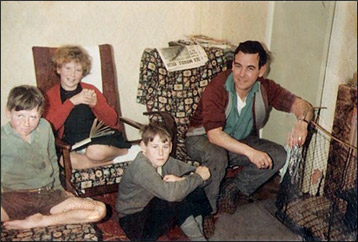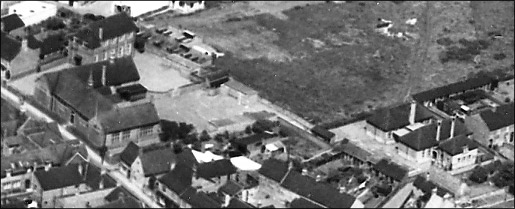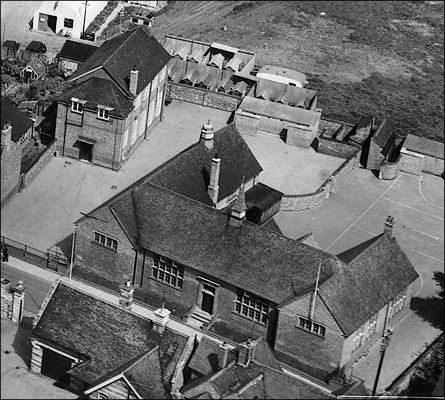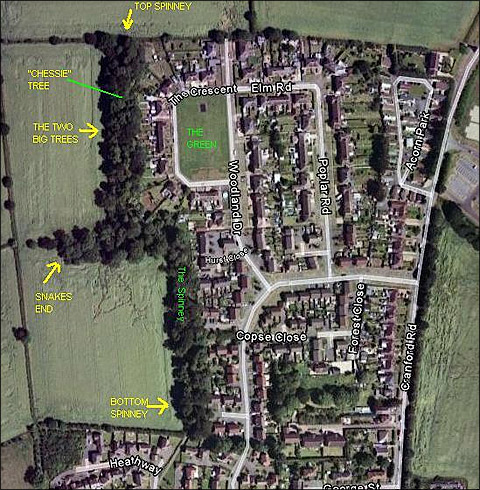| Written by Tony Jolley, October 2008 |
|||||||||||||
|
|||||||||||||
|
|||||||||||||
|
I was born in 1951 and lived in The Crescent on the
I remember my first day at the council infant school situated in the High Street. Always referred to as ‘The Little School’ as opposed to the adjacent junior ‘Big School’. Just four years old, I was pretty scared at having been abandoned by my mum in this strange place. However, on that very first day I met a boy named Richard (Dick) Wallington and we became friends and remained so over several years. Dick lived in
Anyway, the days turned to weeks and months and I settled in and made more friends. We learned our times tables parrot fashion and eventually mastered the difference between ‘curly kuh’ (c) and ‘kicking kuh’ (k) and all was well. The headmistress was Mrs Williams. Every morning she would conduct assembly and start by saying “Good morning children”. Back would come the response in that delightful sing-song way that children have, “Good mor-ning Miss-es Will-e-ums”.
Time passed and it was then on to ‘Big School’. Fred Pentelow was headmaster here. He could be quite a disciplinarian but was always fair. I recall his favourite trick was to throw a piece of chalk into the air, raise his arm and catch it in the sleeve of his jacket. Other teachers that I remember include Mr White, Miss Leach and Miss Stokes.
The desks still had ink-wells in those days and we were given pens with wooden shafts and metal nibs to write with. How we ever managed to write anything legible is a mystery – we must have used reams of blotting paper. Most of us progressed to using fountain pens filled with ‘Quink’ ink but they were not much better, having a rubber bladder inside that was depressed by a clip arrangement set into the barrel of the pen. Just another way of making a mess really, and often misused as ink pistols!
Every year there was a handwriting competition sponsored by Cadbury’s. Among us there was one pupil whose handwriting was beautiful even at that young age, and it was Pamela Dacre who (deservedly) won this annual event (more than once I think). Me and Dick Wallington were not so hot when it came to writing, but let loose with newspaper and paste we were the ‘paper-mashee’ kings of Mr White’s ‘craft’ lesson.
At playtime, the boys and girls were segregated to different playgrounds, but not during lessons (I sat next to Kathy Johnson in Mr White’s class). After we’d drunk our one third of a pint bottle of free school milk we’d indulge in the usual playground games of tick, ‘opscotch, and the like. Some of us would often hang around in the old air-raid shelters that still existed then. A hand-bell would be rung by a prefect (or monitor?) to signal the end of playtime, accompanied by the shouted command “ALL-E-ALL-E IN!”.
Of course school days were an important part of our lives, but we didn’t think so at the time. The best times as far as we were concerned were after school, weekends and holidays. We always walked home from school and a fifteen minute walk would invariably take us an hour or more – there were so many distractions for young boys. I mostly walked home with my ‘best friends’ Dave Downing and Christopher (‘Kit’) Davies. Our usual route would be along the High Street then right at The Cross into
On then through the ‘garden fields’ and spinney to home. Sometimes we’d vary the route and go ‘field way’ which was a shortcut opposite the bottom of Station road that led the garden fields. Going this way entailed walking past Arthur Gilby’s shop situated just up from the corner of
I can still picture Arthur operating his mechanical bacon slicer. It had a circular blade that made a swishing noise as he cut the bacon joint into rashers. There were huge (in our eyes) jars of sweets that you could buy by the quarter ounce (or even two ounces) – That’s if you had any money…….
We didn’t get pocket money. I, like a great friend of mine at the time, David (‘Dabby’) Byland, earned half a crown on Saturdays by running our respective Nan’s errands. As soon as we got our grubby little paws on the cash we’d promptly spend most of it.
First stop would be Jack and June Smith’s Newsagent and Confectioner, referred to by most simply as ‘The paper shop’. Swizzel lollys, Spangles, Refreshers, Love Hearts, Parma Violets, Black Jacks,‘Kay-lie’ (a kind of sherbet) and much more lay behind the glass counter all awaiting our agonisingly slow selection process.
Sometime I’d forgo some of these gastronomic delights in favour of comic books. Among the most popular were the ‘horror comics’ like ‘Tales from the Crypt’ and especially the ‘war books’ like ‘Commando’. The latter fuelled our young imaginations, and the games we played in our much loved spinney reflected this.
“No more school, no more stick, no more dirty ’rithmetic!”. This is the ditty the kids sang on the day we broke for the summer holidays – the ‘August holidays’ as we called them. This is the time when our adventures became more far ranging.
We’d wander far and wide – up the fields to the railway line north of us, the ‘rec’, the ‘hurdy gurdy’ bridge and adjacent Ise brook, and walk as far as
One of the most popular pastimes was foraging in the ‘tip’ (under ‘
It was also during the summer months that
If I remember correctly, it was late November/early December when the Co-op held an open evening at which toys were on display and parents would take their children to view all the potential presents that they couldn’t really afford to buy them for Christmas. The financial burden may have been slightly eased because I’m almost sure it coincided with ‘divvi day’- the annual dividend paid out by the Co-op to its customers (“Dornt forget air Tony – check number 102”).
These are some of the enduring memories of I have of living and growing up in
To sum up, I can’t think of anything more appropriate than the words of the 1960’s song by The Kinks…..
“Thank you for the days Those endless days Those sacred days you gave me”
Tony Jolley – October 2008 * Note: "Spruce" was a local term for fizzy drink. |
|||||||||||||






